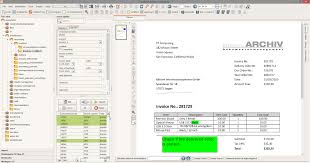
The Power of Document Organizer Software
In today’s digital age, the amount of documents and files we deal with on a daily basis can be overwhelming. Whether you’re a student, a professional, or just someone trying to keep their personal files in order, having an effective document organizer software can make a world of difference.
Document organizer software is designed to help you manage, categorize, and search for your files with ease. By organizing your documents in a structured manner, you can save time and effort when looking for specific information.
Key Features of Document Organizer Software:
- File Categorization: Organize your documents into folders or categories based on your preferences or criteria.
- Search Functionality: Easily search for specific files using keywords or filters for quick access.
- Tagging and Labeling: Assign tags or labels to your documents for better organization and retrieval.
- Version Control: Keep track of different versions of the same document and manage changes effectively.
- Security Features: Protect sensitive documents with encryption, access controls, and secure sharing options.
Document organizer software not only helps you stay organized but also improves collaboration among team members by providing a centralized platform for file sharing and document management. With cloud-based solutions, you can access your files from anywhere at any time, making remote work more efficient and productive.
Whether you’re managing project documents, personal files, or business records, investing in reliable document organizer software can streamline your workflow and enhance productivity. Say goodbye to cluttered folders and endless searches – embrace the power of document organization today!
6 Essential Tips for Mastering Document Organizer Software
- Use descriptive file names to easily identify documents.
- Create folders and subfolders to organize documents by category or project.
- Utilize tags or labels for quick searching and filtering of documents.
- Regularly backup your document organizer software to prevent data loss.
- Set permissions and access levels to control who can view, edit, or delete documents.
- Implement a consistent naming convention for version control of documents.
Use descriptive file names to easily identify documents.
When utilizing document organizer software, a valuable tip to enhance efficiency is to use descriptive file names that accurately reflect the content of the documents. By incorporating relevant keywords or phrases into the file names, users can quickly identify and locate specific documents without having to open each one individually. This simple yet effective practice not only streamlines the organization process but also facilitates faster retrieval of information, ultimately saving time and improving overall productivity.
Create folders and subfolders to organize documents by category or project.
To optimize your document organization system, a valuable tip is to create folders and subfolders to categorize documents based on specific projects or categories. By structuring your files in this hierarchical manner, you can easily navigate through your documents and locate what you need efficiently. This approach not only helps in maintaining a clear and organized file structure but also enhances productivity by providing a systematic way to manage and access your documents.
Utilize tags or labels for quick searching and filtering of documents.
By utilizing tags or labels in your document organizer software, you can significantly enhance your searching and filtering capabilities. Assigning specific tags or labels to your documents allows for quick categorization and easy retrieval of information when needed. Whether you’re looking for a specific project file, client document, or personal record, using tags or labels streamlines the search process and ensures that you can locate the exact document you need efficiently. This simple yet powerful organizational tip can save you time and frustration while maximizing the effectiveness of your document management system.
Regularly backup your document organizer software to prevent data loss.
Regularly backing up your document organizer software is a crucial step in ensuring the safety and security of your valuable data. By creating backups at scheduled intervals, you can protect against unexpected data loss due to system failures, accidental deletions, or other unforeseen events. Having a recent backup ensures that you can quickly restore your document organizer software to its previous state and minimize the impact of any potential data loss. Remember, prevention is key when it comes to safeguarding your important documents and files.
Set permissions and access levels to control who can view, edit, or delete documents.
Setting permissions and access levels in document organizer software is a crucial tip to ensure data security and control over document management. By defining who can view, edit, or delete documents, organizations can prevent unauthorized access, maintain data integrity, and streamline collaboration processes. This feature allows administrators to tailor access rights based on roles and responsibilities, enhancing confidentiality and compliance with regulatory requirements. Implementing strict permissions not only safeguards sensitive information but also promotes efficient workflow management within teams, fostering a secure and productive work environment.
Implement a consistent naming convention for version control of documents.
Implementing a consistent naming convention for version control of documents is a crucial tip when using document organizer software. By establishing a clear and standardized naming format, such as including the date or version number in the file name, you can easily track and manage different iterations of your documents. This practice not only helps you avoid confusion but also ensures that you can quickly identify the most recent or relevant version when collaborating with team members or revisiting past revisions. Consistency in naming conventions promotes organization and efficiency in document management, ultimately saving time and reducing errors in your workflow.
